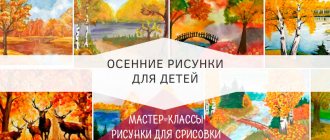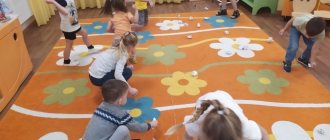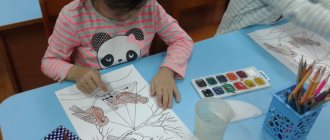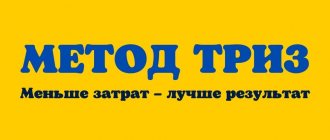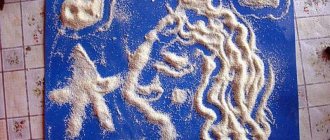GCD in the middle group for labor education “Let's help the doll Masha”
GCD in the middle group for labor education “Let's help the doll Masha”
Target:
— Form a positive attitude towards work
.
Tasks:
— Consolidate and improve household labor
:
wash toys, carefully use a cloth and water; bring the job started to completion.
— Promote mastery of a culture of performing activities (observing the three rules of work
: the apron is clean, the workplace is clean, the result of
the work is clean
).
— To develop children’s interest in work
activities of adults, the desire to provide
assistance
, and to take care of the results
of labor
.
Materials: Doll Masha
, dirty toys, basins, sponges, rags, soap dishes, a bucket of water, candy for children.
Move
Educator
: Children, today, while you were sleeping, I was left
alone in the group
.
I sat and typed documents. And suddenly I hear someone talking quietly behind me. I turned around, there was no one, you were sleeping. And then I thought that it was my imagination. I started working further. But the quiet conversation continued. And then I heard and then saw that it was the Masha doll
on the shelf talking with her friends and complaining about us.
She said that children do not like their toys at all. Although they put them back in place, they do not take care of them. Doll Masha
I wanted to invite my friends from a neighboring
group for tea
, but she was uncomfortable because all our dishes were dusty and the food in the store was dirty. I even heard her cry.
Educator
: But it’s true.
We haven’t washed doll dishes and toys for a very long time. Let's help our doll Masha and wash the toys
?
Children: Yes. Let's help
.
Educator
: For work we will need oilcloths for the table. And what else?
Children: aprons, basins, warm water.
Educator
: And that's not enough. What will we wash with?
Children: With a sponge and soap.
Educator
: We’ll dry it on a cloth
Children together with the teacher
They put on aprons and prepare workplaces: they put oilcloths on the tables, put basins, go to dilute the soap solution, and
the teacher
pours warm water and puts towels.
Educator
: But before
we work
, we need to stretch our fingers.
Finger game " Helpers "
One, two, three, four, Rhythmic fist and clap strikes alternately.
We washed the dishes: One palm slides over the other
Teapot, cup, ladle, spoon
And a big ladle. We bend our fingers one at a time for each name of the dish.
We washed the dishes, One palm slides over the other.
We just broke the cup,
The ladle also fell apart,
The teapot's nose is broken, we bend our fingers again.
We broke the spoon a little.
helped mom
. Rhythmic fist and clap strikes alternately.
Educator
: And now
the doll Masha
will give you dirty toys and will watch you
wash
.
Children work independently under the supervision of a teacher
.
Teacher (addresses the doll )
.
Tell Masha
, did you like how we washed the toys?
Doll
: Of course, thank you very much. I hope you won't forget to keep your toys clean?
Children: No, we won't.
Educator
: And now children, while the toys are drying, let’s clear everything from the tables and put things in order after
work
.
That's clean. Masha doesn’t get offended
at us , we
will help her set the table
so that she can treat her friends to tea. And put sweets and fruits on plates.
Well done. I am very pleased that you are such assistants
.
Educator
: Children, do you hear someone knocking?
These are probably guests rushing to our doll
.
(I bring dolls, the children help
seat them at the table along with our
doll Masha
).
Educator
: Oh,
the doll
wants to tell me something.
Doll Masha
: I also want to treat all the children with candy for their kindness and
hard work
.
Children: Thank you!
Article Outline of the organization of manual labor in the middle group. Author: Kurochkina Elena Evgenievna
Outline of the organization of manual labor in the middle group.
Goal: Consolidating children’s knowledge about work skills in a team by repairing books.
Tasks:
Educational: Continue to involve children in available work activities.
Developmental: Develop attention, observation, mental operations, fine motor skills, aesthetic perception.
Educational: Cultivate a positive attitude towards work, a desire to work together with peers, and treat books with care;
Equipment: books, glue, brushes, scissors, colored paper (cut strips), napkins, oilcloth.
(Children sitting on chairs in a semicircle)
Educator: Guys, today the doll Ira came to visit us, who brought a letter and a torn book. I suggest reading the letter. Do you agree?
Children: Yes.
Educator (reads the letter): Dear children, the Queen of the Book Kingdom writes to you. A girl, Ira, came to visit me; she doesn’t know how to handle books at all, she tore out the pages, painted the cover, but this is not allowed. I know that your group has very friendly and hardworking children. Please teach Ira how to handle books correctly and show how to repair a book.
Sincerely, Queen of the book kingdom.
Guys, can we help Ira? Tell us how to handle books.
Children: Do not throw the book, do not tear out the pages, do not draw in the book, pick it up with clean hands, watch the book only at the table.
Educator: You are right, but how can you help the book?
Children: Glue, hem, put on the cover.
Educator: Well done, I propose to show Ira how we can fix the book. Look at the table. There is equipment for “Book Repair” on the table. Who can tell me what lies there?
Children: Glue, brushes, scissors, colored paper, napkins, oilcloth.
Educator: That's right, guys. Now I will show you how to properly repair a book. (I take a book, and a ready-made ribbon made of colored paper, and glue this ribbon onto the book). Well, guys, it’s as simple as that.
We share 3 people. And we sit down at the tables. Let's distribute responsibilities, who will do what. (Someone will cut out strips, smear and glue the strip, stick it to the book).
Educator: Tell me how to work with scissors?
Children: Do not wave them, pass the scissors rings forward, keep them in a glass.
Educator: That's right, let's get to work.
(I approach each child with an Ira doll, and watch how the children repair books, I draw attention to the fact that working together helps to complete the work faster).
Educator: You see, Ira, how the children coped with the work together, now you know that the book must be handled with care, and if the book accidentally breaks, you can help it. And now we want to give the Queen of the Book Kingdom a joint photo with books. So that she can see how we helped the doll Ira learn about such work as repairing books.
Tell me, did you encounter any difficulties during your work? What? What did you like most? Well done! In gratitude for your help, the queen gives you a magical book of fairy tales.
Long-term planning for design and manual labor in the middle group. Target
Transcript
1 Subject Long-term planning FOR CONSTRUCTION AND MANUAL LABOR in the middle group p/p Educational topic Lesson topic Purpose Materials and equipment Literature “Goodbye, summer! Hello, kindergarten! “In the Land of Invention” “Forest kindergarten”. “Squirrel Gifts” September Learn to organize space for construction; plan activities, model; design various pieces of furniture; unite buildings with a single plot. Encourage the creation of new versions of already familiar buildings, develop design abilities, and form ideas about geometric shapes. To acquaint children with natural materials, with their properties (shape, surface texture), to interest children in the possibility of using it to create crafts. October Cubes. a box with construction materials, an envelope, flat paper models of various shapes, pencils, felt-tip pens. A toy or image of a squirrel, a basket, pine cones, acorns, nut shells, ash and maple wings, feathers, pebbles, twigs, plasticine, crafts made from natural materials, -26 VKT.2010, - p.79
2 “Visiting a fairy tale” “My favorite games” “Music box” “Castle for a princess” “Turtles” “Do-it-yourself Philharmonic” Develop children’s design skills, practice constructing strong buildings with ceilings by building paper models with bricks , making floors from plates and boards, constructing superstructures on floors, decorating roofs with various details; practice distinguishing and naming basic geometric shapes and shading. Develop imagination, creativity, the ability to independently perform a sequence of actions, generalize and compare. Teach children to divide plasticine into parts, practice orientation in space, strengthen the skills of rolling a ball from plasticine November Teach children to follow the construction plan, take into account color, shape, size. Colored pencils, building material, flat paper models of different sizes and colors. Finger game: "Turtle". Half of a walnut shell, plasticine, sample, stacks of building set - wooden, gnome toys, additional material - medical devices of material, -20 VKT.2010, - p.83 material, -13; Internet resources,
3 6. “We are one big family” “Bear” Develop an interest in manual labor, a desire to create crafts with your own hands. Encourage children to independently select material. December Plasticine, scales of cones, pits from plums or apricots, maple lionfish, watermelon seeds, a toy bear, a sample of crafts VKT.2010, - from “The Safe World of Childhood” “The Magical World of Books” “Houses, a shed and” “Mouse Rucker” Exercise children in fencing small spaces with bricks and plates installed vertically and horizontally; in the ability to make overlap; in mastering spatial concepts (in front, behind, below, above, left, right); in entertainment and naming colors. Develop independence in finding design methods; promote playful communication. Strengthen the ability to construct a craft from natural materials, teach how to choose materials for small parts, and navigate in space. January Felt-tip pens, construction kits. Reading a Russian folk tale: “The Little Mouse” Half a walnut shell, watermelon, pumpkin seeds, a piece of yarn, a thin twig, paper ear and tail blanks, glue, toy material, -21 VKT.2010, - p.86
4 “Active lifestyle” “Beauty will save the world” “How to work with these cubes and bricks” “Chicks on a green meadow” Give children the opportunity to independently become acquainted with cubes, bricks, prisms (distinguish the shapes, name them); lead to an understanding of the functional purpose of the material to build various structures. Learn to experiment and independently discover the structural properties of the material. Develop imagination. Encourage connecting and placing pieces in space in different ways. Cultivate interest in constructive activities. To consolidate the ability to design from pine cones, to introduce a new method of fastening (adhesive) parts made of this material to each other. February Tabletop building materials: cubes, bricks, prisms. (10 pieces of each type for 1 child) Listening to the song: “Chickens.” Music Vitaly Alekseev, words by Marina Frolova. Pine cones of different sizes, watermelon seeds, pumpkin seeds or small lionfish, paper blanks for eyes, plasticine, PVA glue, craft sample. material, -21; online resources VKT.2010, - p.94
5 Construction “Friendly guys” “I love you, Voronezh” “In the land of different words” “Animal houses” “Mushroom glade”. “Thirtieth Kingdom” Exercise children in fencing small spaces with bricks and plasticine. Develop independence in finding design methods, promote playful generalization. Learn to analyze a sample, transfer the knowledge and skills acquired in working with one material to the process of making crafts from another material. March Develop children's constructive skills; practice in the construction of durable buildings with overlapping buildings by lining paper models with bricks, making coverings from plates and boards. Constructing superstructures on floors, decorating roofs with various details. Develop imagination, creativity, the ability to independently perform a sequence of actions, generalize, compare. Felt pens, construction kits Half a walnut shell, plasticine, Squirrel toy, cardboard clearing stand Colored pencils, construction material. Flat paper models of different sizes and colors. material, -21 VKT.2010, - p.81 material, -28
6 “Healthy lifestyle” “In a world of different sounds” “Chickens are football players” “Trucks and cars” Strengthen the ability to design from pine cones. Introduce a new method of fastening (adhesive) parts made of this material to each other. Development of spatial orientation in children. April Give children a general idea of freight transport; exercise in its design, in analyzing samples, in transforming structures according to given conditions; give an idea of the construction part of the cylinder and its properties; clarify children’s ideas about geometric shapes; encourage the search for their own solutions, develop the ability for planar modeling. Pine cones of different sizes, watermelon, pumpkin or small lionfish seeds, PVA glue. Construction kits, scissors, brushes, glue VKT.2010, - p.94 material, “Week of Polite Sciences” “The Magic Forest of Lesovichka” Strengthen the ability to use natural materials to create crafts. Develop a sense of aesthetics. To develop an interest in manual labor and a desire to create crafts with your own hands. An image of the fairy-tale character Lesovichka, large fresh tree leaves, a large sheet of paper or thin cardboard. VKT.2010, - p.13
7 “The World Around Us” “Week of Whys” “Voronezh Bridges” “Why does the boat float?” 19. Pedagogical diagnostics May Give children an idea of bridges, their purpose, structure; practice building bridges; consolidate the ability to analyze examples of buildings and illustrations. Introduce children to a stencil ruler (with geometric shapes), practice working with it, comparing shapes, highlighting similarities and differences. Strengthen the ability to construct a craft from natural material by connecting a flying piece of plasticine Construction kits, stencil rulers, felt-tip pens. Photo of Voronezh bridges Half a walnut shell, a leaf of any tree, a paper flag, plasticine, glue, frog-frog (toy) material, -37 VKT.2010, - p.84 *Note: manual labor is carried out in the average flu 2 times per month (week after week) in free activity.
